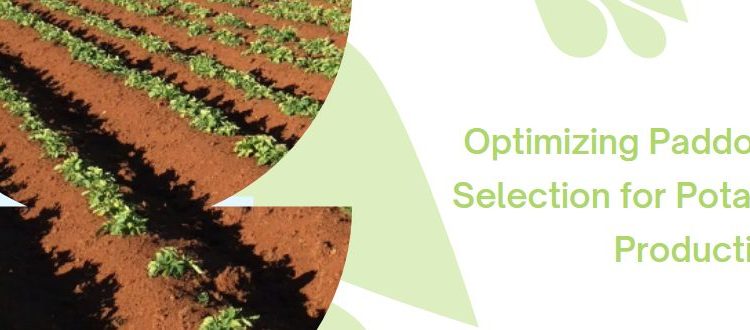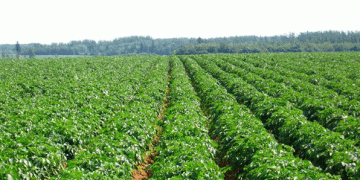#paddockselection #potatoproduction #soilhealth #diseasepressure #croppingrotations #pathogenloads #seedbedpreparation #soilbornediseases #organicmatterlevels
When choosing paddocks for potato production, several key factors should be taken into account to ensure optimal results. The following considerations play a significant role in determining the suitability of a paddock for potato cultivation:
New Land
Utilizing land that has not previously been used for potato cultivation offers advantages in terms of reduced soilborne diseases that can hamper yield and quality. However, it is still essential to evaluate the presence of pathogens that may have built up on non-potato hosts. Paddocks that have never grown potatoes can harbor high levels of root lesion, root knot, and stubby root nematodes. To safeguard soil health, it is crucial to introduce properly certified seed stocks, preventing the introduction of contaminated seed potatoes into clean paddocks.
Past Potato Cropping
The history of potato cropping in a paddock significantly influences disease pressure and soil health. The number of potato crops grown in a paddock and the length of rotation between host species are crucial factors. Short rotations, with a higher frequency of potato crops, tend to intensify disease pressure. For example, black dot incidence has been observed to correlate with rotation length and the number of potato crops grown.
Furthermore, intensive horticultural production, especially after root crops like potatoes and carrots, can impact soil structure and reduce organic matter levels. This is particularly true for medium to heavy textured soils, especially when harvesting occurs under suboptimal soil moisture conditions. It is imperative to address these soil health issues to ensure sustainable potato production.
Choosing paddocks wisely for potato production can have significant implications for overall crop success. Optimal paddock selection:
Reduces disease pressure: Selecting paddocks with no history of potato cultivation helps minimize soilborne diseases, enhancing yield and quality.
Enhances soil health: By considering cropping rotations and managing soil structure, organic matter levels can be maintained, leading to improved soil health and long-term sustainability.
Promotes efficient fertilizer use: Paddocks that have not been used for horticultural production may require additional fertilizers and soil amendments to condition the soil adequately, optimizing potato production.
Selecting suitable paddocks for potato production involves careful evaluation of pathogen loads, past cropping rotations, herbicide history, and soil suitability. By making informed decisions and implementing appropriate practices, growers can mitigate disease risks, promote soil health, and achieve optimal potato production outcomes.
Source: Australian Potato Growing Guide






